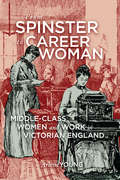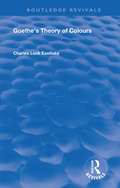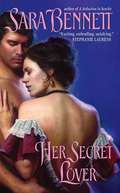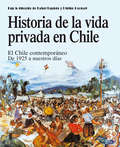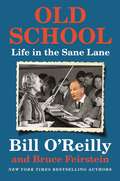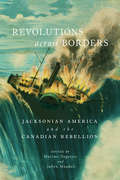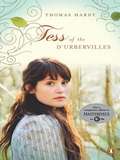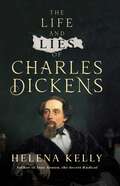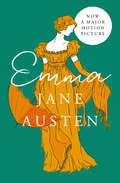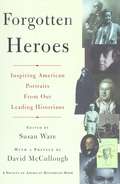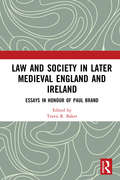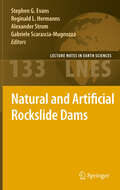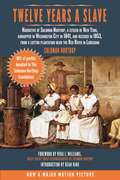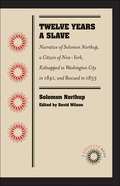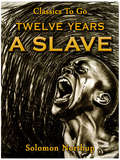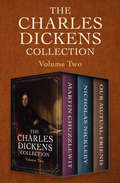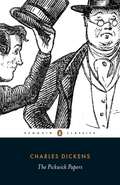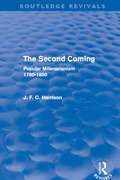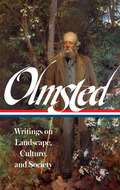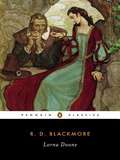- Table View
- List View
From Spinster to Career Woman: Middle-Class Women and Work in Victorian England
by Arlene YoungThe late Victorian period brought a radical change in cultural attitudes toward middle-class women and work. Anxiety over the growing disproportion between women and men in the population, combined with an awakening desire among young women for personal and financial freedom, led progressive thinkers to advocate for increased employment opportunities. The major stumbling block was the persistent conviction that middle-class women - "ladies" - could not work without relinquishing their social status. Through media reports, public lectures, and fictional portrayals of working women, From Spinster to Career Woman traces advocates' efforts to alter cultural perceptions of women, work, class, and the ideals of womanhood. Focusing on the archetypal figures of the hospital nurse and the typewriter, Arlene Young analyzes the strategies used to transform a job perceived as menial into a respected profession and to represent office work as progressive employment for educated women. This book goes beyond a standard examination of historical, social, and political realities, delving into the intense human elements of a cultural shift and the hopes and fears of young women seeking independence. Providing new insights into the Victorian period, From Spinster to Career Woman captures the voices of ordinary women caught up in the frustrations and excitements of a new era.
Goethe’s Theory of Colours: Translated From The German, With Notes (Routledge Revivals)
by Johann Wolfgang GoetheFirst published in German in 1810, this detailed volume was translated from the German by Charles Lock Eastlake and, in six parts, examines every aspect of Goethe’s theory of colours, including psychological colours, chemical colours, the moral effect of colour, minerals, plants, insects, mammals and a multitude of further subjects.
Her Secret Lover
by Sara BennettDesperate to save her reputation, the beautiful heiress Antoinette Dupre escapes to Wexmoor Manor, a country estate in Devon. But she gets more than she bargained for when she encounters a masked stranger who, with just one touch, awakens in her an irresistible desire. Gabriel Langley is on a mission. Antoinette has a letter he needs to take back his family's ancestral home, and he is willing to go to any lengths to claim it-even seduce her. And though aware he is playing a dangerous game, he cannot resist returning to her bed in the shadow of darkness . . . to become her secret lover. But when Gabriel's true identity is revealed, their passionate midnight interludes are threatened. And they must face a web of scandal and blackmail that could destroy their one chance for love . . .
Historia de la vida privada en Chile 3
by Rafael SagredoEl volumen final de Historia de la vida privada en Chile del siglo XX con áreas tan fundamentales como la situación de los clandestinos durante el gobierno de Pinochet, la Unidad Popular, los campos de concentración y la vida de los sobrevivientes de las víctimas de la dictadura.
Homesteads Ungovernable: Families, Sex, Race, and the Law in Frontier Texas, 1823-1860
by Mark M. CarrollWhen he settled in Mexican Texas in 1832 and began courting Anna Raguet, Sam Houston had been separated from his Tennessee wife Eliza Allen for three years, while having already married and divorced his Cherokee wife Tiana and at least two other Indian "wives" during the interval. Houston's political enemies derided these marital irregularities, but in fact Houston's legal and extralegal marriages hardly set him apart from many other Texas men at a time when illicit and unstable unions were common in the yet-to-be-formed Lone Star State.<P>In this book, Mark Carroll draws on legal and social history to trace the evolution of sexual, family, and racial-caste relations in the most turbulent polity on the southern frontier during the antebellum period (1823-1860). He finds that the marriages of settlers in Texas were typically born of economic necessity and that, with few white women available, Anglo men frequently partnered with Native American, Tejano, and black women. While identifying a multicultural array of gender roles that combined with law and frontier disorder to destabilize the marriages of homesteaders, he also reveals how harsh living conditions, land policies, and property rules prompted settling spouses to cooperate for survival and mutual economic gain. Of equal importance, he reveals how evolving Texas law reinforced the substantial autonomy of Anglo women and provided them material rewards, even as it ensured that cross-racial sexual relationships and their reproductive consequences comported with slavery and a regime that dispossessed and subordinated free blacks, Native Americans, and Tejanos.
Old School: Life in the Sane Lane
by Bruce Feirstein Bill O'Reilly<P>Old School is in session....You have probably heard the term Old School, but what you might not know is that there is a concentrated effort to tear that school down.It’s a values thing. The anti–Old School forces believe the traditional way of looking at life is oppressive. Not inclusive. The Old School way may harbor microaggressions. Therefore, Old School philosophy must be diminished. <P>Those crusading against Old School now have a name: Snowflakes. You may have seen them on cable TV whining about social injustice and income inequality. You may have heard them cheering Bernie Sanders as he suggested the government pay for almost everything. The Snowflake movement is proud and loud, and they don’t like Old School grads.So where are you in all this? <P>Did you get up this morning knowing there are mountains to climb—and deciding how you are going to climb them? Do you show up on time? Do you still bend over to pick up a penny? If so, you’re Old School. <P>Or did you wake up whining about safe spaces and trigger warnings? Do you feel marginalized by your college’s mascot? Do you look for something to get outraged about, every single day, so you can fire off a tweet defending your exquisitely precious sensibilities? Then you’re a Snowflake. <P>So again, are you drifting frozen precipitation? Or do you matriculate at the Old School fountain of wisdom?This book will explain the looming confrontation so even the ladies on The View can understand it. Time to take a stand. Old School or Snowflake. Which will it be? <P><b>A New York Times Bestseller</b>
Revolutions across Borders: Jacksonian America and the Canadian Rebellion (Rethinking Canada in the World #3)
by Maxime Dagenais Julien MauduitStarting in 1837, rebels in Upper and Lower Canada revolted against British rule in an attempt to reform a colonial government that they believed was unjust. While this uprising is often perceived as a small-scale, localized event, Revolutions across Borders demonstrates that the Canadian Rebellion of 1837–38 was a major continental crisis with dramatic transnational consequences. In this groundbreaking study, contributors analyze the extent of the Canadian Rebellion beyond British North America and the turbulent Jacksonian period's influence on rebel leaders and the course of the rebellion. Exploring the rebellion's social and economic dimensions, its impact on American politics, policy-making, and the philosophy of manifest destiny, and the significant changes south of the border that influenced this Canadian uprising, the essays in this volume show just how malleable borderland relations were. Chapters investigate how Americans frustrated with the young republic considered an “alternative republic” in Canada, the new monetary system that the rebels planned to establish, how the rebellion played a major role in Martin Van Buren's defeat in the 1840 presidential election, and how America's changing economic alliances doomed the Canadian Rebellion before it even started. Reevaluating the implications of this transnational conflict, Revolutions across Borders brings new life and understanding to this turning point in the history of North America.
Tess of the D'Urbervilles
by Thomas HardyCambridge Literature is a series of literary texts edited for study by students aged 14-18 in English-speaking classrooms. It will include novels, poetry, plays, short stories, essays, travel-writing and other non-fiction. The series will be extensive and open-ended, and will provide school students with a range of edited texts taken from a wide geographical spread. It will include writing in English from various genres and differing times. Tess of the d'Urbervilles by Thomas Hardy is edited by Rex Gibson, Director, Shakespeare and Schools Project.
The Life and Lies of Charles Dickens
by Helena KellyA radical reassessment of the famed Victorian author, revealing the true story behind the creator of some of literature's best-known novels.This dynamic new study of Charles Dickens will make readers re-examine his life and work in a completely different light. First, partly due to the massive digitalization of papers and letters in recent years, Helena Kelly has unearthed new material about Dickens that simply wasn't available to his earlier biographers. Second, in an astonishing piece of archival detective work, she has traced and then joined the dots on revelatory new details about his mental and physical health that, as the reader will discover, had a strong bearing on both his writing and his life and eventual death. Together these have allowed her to come up with a striking hypothesis that the version of his life that Dickens chose to share with his public—both during his lifetime and from beyond the grave in the authorized biography published shortly after his death—was an elaborate exercise in reputation management. Many of the supposed formative events in his life—such as the twelve-year-old Dickens going to work in a blacking factory—may not have been quite as honestly-related as we have been led to believe. And, in many respects, who can blame him? Dickens's celebrity was on a scale almost unimaginable to any author writing today, with the possible exception of J. K. Rowling, and, like many people who become suddenly famous, he soon realized what a mixed blessing it was.
Emma: Allbooks Studio Deluxe Edition (Classics Ser.)
by Jane AustenAn enchanting comedy of errors, Emma remains a classic two centuries after it was first published. Emma Woodhouse is a privileged young woman whose greatest pleasure in life lies in matchmaking for anyone but herself. Written, by Austen&’s own admission, as &“a heroine whom no one but myself will much like,&” Emma&’s charm and wit exist in constant tension with her capacity for selfishness and vanity. Despite her intelligence, Emma stumbles from one catastrophe to the next—from a misguided attempt at securing a husband for her friend Harriet Smith to her disastrous meddling in the affairs of new arrivals Frank Churchill and Jane Fairfax—before ultimately falling into her own unexpected happy ending. Both a discerning look at the strictures of Regency England and an enchanting comedy of errors, Emma remains a classic two centuries since it was first published. This ebook has been professionally proofread to ensure accuracy and readability on all devices.
Forgotten Heroes
by Susan WareThe pages of the past are full of characters who remind us that history depends upon the great deeds of men and women, whether famous or humble. Where would America be without George Washington, or Daniel Boone, or Sojourner Truth, or Babe Ruth? Where would we be without so many characters who are less well remembered today? Historians and biographers regularly come across stories of little-known or forgotten heroes, and this book provides a chance to rescue some of the best of them. In Forgotten Heroes, thirty-five of the country's leading historians recount their favorite stories of underappreciated Americans. From Stephen Jay Gould on deaf baseball player Dummy Hoy; to William Leuchtenburg on the truth behind the legendary Johnny Appleseed; to Christine Stansell on Margaret Anderson, who published James Joyce's Ulysses; these portraits can be read equally for delight, instruction, and inspiration Taken together, however, the whole is much more than the sum of its parts. Every culture needs heroes who lead by example and uplift us all in the process. Too often lately, historians have been more intent on picking apart the reputations of previously revered Americans. At times it has seemed as if the academy were on the attack against much of its own culture, denying its past greatness while making heroes only of its dissidents and doubters. Yet as this collection vividly demonstrates, heroes come in many shapes and sizes, and we all gain when we remember and celebrate them. Forgotten Heroes includes nearly as many women as men, and nearly as many people from before 1900 as after. It expands the traditional definition of hero to encompass not only military figures and politicians who took risks for great causes, but also educators, religious leaders, reformers, labor leaders, publishers, athletes, and even a man who started a record company. Many of them were heroes of conscience -- men and women who insisted on doing the right thing, no matter how unpopular or risky, commanding respect even from those who disagreed. Some were famous in their day and have since been forgotten, or remembered only in caricature. Others were little-known even when alive -- yet they all deserve to be remembered today, especially at the gifted hands of the authors of this book.
Law and Society in Later Medieval England and Ireland: Essays in Honour of Paul Brand
by Travis R. BakerLaw mattered in later medieval England and Ireland. A quick glance at the sources suggests as much. From the charter to the will to the court roll, the majority of the documents which have survived from later medieval England and Ireland, and medieval Europe in general, are legal in nature. Yet despite the fact that law played a prominent role in medieval society, legal history has long been a marginal subject within medieval studies both in Britain and North America. Much good work has been done in this field, but there is much still to do. This volume, a collection of essays in honour of Paul Brand, who has contributed perhaps more than any other historian to our understanding of the legal developments of later medieval England and Ireland, is intended to help fill this gap. The essays collected in this volume, which range from the twelfth to the sixteenth century, offer the latest research on a variety of topics within this field of inquiry. While some consider familiar topics, they do so from new angles, whether by exploring the underlying assumptions behind England’s adoption of trial by jury for crime or by assessing the financial aspects of the General Eyre, a core institution of jurisdiction in twelfth- and thirteenth-century England. Most, however, consider topics which have received little attention from scholars, from the significance of judges and lawyers smiling and laughing in the courtroom to the profits and perils of judicial office in English Ireland. The essays provide new insights into how the law developed and functioned within the legal profession and courtroom in late medieval England and Ireland, as well as how it pervaded the society at large.
Natural and Artificial Rockslide Dams
by Reginald L. Hermanns Alexander Strom Stephen G. Evans Gabriele Scarascia-MugnozzaIn the last one hundred years, a number of catastrophic events associated with rockslide dam formation and failure have occurred in the mountain regions of the world. This book presents a global view of the formation, characteristics and behaviour of natural and artificial rockslide dams. Chapters include a comprehensive state-of-the-art review of our global understanding natural and artificial rockslide dams, overviews of approaches to rockslide dam risk mitigation, regional studies of rockslide dams in India, Nepal, China, Pakistan, New Zealand, and Argentina. Rockslide dams associated with large-scale instability of volcanoes are also examined. Detailed case histories of well-known historic and prehistoric rockslide dams provide examples of investigations of rockslide dam behaviour, stability, and characteristics. The formation and behaviour of rockslide-dammed lakes ("Quake Lakes") formed during the 2008 Wenchuan Earthquake, China are also comprehensively summarised. The formation, sedimentology and stability of rockslide dams is examined in several analytical papers. An analysis of break-out floods from volcanogenic lakes and hydrological methods of estimating break-out flood magnitude and behavior are reviewed. The use of remote sensing data in rockslide-dammed lake characterisation is explored and a new approach to the classification of rockslide dams is introduced. Finally, a unique section of the book summarises Russian and Kyrgyz experience with blast-fill dam construction in two papers by leading authorities on the technology. The volume contains 24 papers by 50 authors from 16 countries including most of the recognised world authorities on the subject.
Textual Practice: Volume 8, Issue 2
by Terence HawkesFirst published in 1994. Routledge is an imprint of Taylor & Francis, an informa company.
Twelve Years a Slave: Narrative of Solomon Northup, a Citizen of New York, Kidnapped in Washington City in 1841, and Rescued in 1853, from a Cotton Plantation Near the Red River in Louisiana
by Dean King Solomon Northup Vera J. WilliamsThe incredible true story of the kidnapping, enslavement, and rescue of Solomon Northup in the era before the Civil War-now a major motion picture!In 1841, Solomon Northup was a free man living in Saratoga Springs, New York, making a living as a violinist and spending his spare time with his wife and three young children. Lured to Washington, DC, with the promise of a generous sum of money, Northup finds himself drugged, beaten, and sold before he can even begin to comprehend the tragic turn his life has taken. Twelve torturous years of slavery follow, with Northup passed from owner to owner, plantation to plantation, until his eventual rescue in 1853. Following his return to New York, Northup wrote and published this extraordinary book, one of the few accounts of American slavery written from the perspective of a man who had been free before being enslaved.Lost for nearly a century, Twelve Years a Slave offers unprecedented details of the slave markets of Washington, DC, and describes the excruciating life on Southern cotton plantations. In its time, Twelve Years a Slave was a bestseller and ignited a national dialogue on slavery in the years leading up to the Civil War. Northup's unsparing portrayal of the life of a slave captured minds and eventually divided a nation.
Twelve Years a Slave: Narrative of Solomon Northup, a Citizen of New-York, Kidnapped in Washington City in 1841, and Rescued in 1853
by Solomon NorthupAfter living as a free man for the first thirty-three years of his life, Solomon Northup was drugged, kidnapped, and sold into slavery, leaving behind a wife and three children in New York. Sold to a Louisiana plantation owner who was also a Baptist preacher, Northup proceeded to serve several masters, some who were brutally cruel and others whose humanity he praised. After years of bondage, he met an outspoken abolitionist from Canada who notified Northup's family of his whereabouts, and he was subsequently rescued by an official agent of the state of New York. Twelve Years a Slaveis his account of this unusual series of events. Northup describes life on cotton and sugar cane plantations in meticulous detail. One slave narrative scholar calls his narrative "one of the most detailed and realistic portraits of slave life. " He also leavens his account with wry humor and cultural commentary, making many parts of the narrative read more like travel writing than abolitionist literature. Twelve Years a Slavepresents the remarkable story of a free man thrown into a hostile and foreign world, who survived by his courage and cunning. A DOCSOUTH BOOK. This collaboration between UNC Press and the University of North Carolina at Chapel Hill Library brings selected classic works from the digital library of Documenting the American South back into print. DocSouth Books uses the latest digital technologies to make these works available as downloadable e-books or print-on-demand publications. DocSouth Books are unaltered from the original publication, providing affordable and easily accessible editions to a new generation of scholars, students, and general readers.
Twelve Years a Slave: Revised Edition Of Original Version (Classics To Go)
by Solomon Northup"Twelve Years a Slave" (1853) is a memoir and slave narrative by Solomon Northup, as told to and edited by David Wilson. Northup, a black man who was born free in New York, details his kidnapping in Washington, D.C. and subsequent sale into slavery. After having been kept in bondage for 12 years in Louisiana by various masters, Northup was able to write to friends and family in New York, who were in turn able to secure his release. Northup's account provides extensive details on the slave markets in Washington, D.C. and New Orleans and describes at length cotton and sugar cultivation on major plantations in Louisiana. (Excerpt from Wikipedia)
The Charles Dickens Collection Volume Two: Martin Chuzzlewit, Nicholas Nickleby, and Our Mutual Friend
by Charles DickensThree classic novels of wealth, poverty, murder, and ambition from the greatest storyteller of the Victorian era. Filled with drama, emotion, and suspense, these three novels have compelled and delighted readers for well over a century. Martin Chuzzlewit: After losing his inheritance, a young man strives to make his own fortune, in this witty, wide-ranging saga. Nicholas Nickleby: A young man fights to save his mother, his sister, and a group of abused schoolboys in this novel of hardship and heroism. Our Mutual Friend: When a corpse is found in the River Thames, it will alter the course of several lives. &“In addition to its realistic police procedures and incisive criminal psychology, Our Mutual Friend is steeped in the gloomy atmosphere and foreboding imagery that one associates with the modern suspense thriller.&” —The New York Times
The Pickwick Papers
by Charles Dickens'One of my life's greatest tragedies is to have already read Pickwick Papers - I can't go back and read it for the first time' Fernando PessoaFew first novels have created as much popular excitement as The Pickwick Papers - a comic masterpiece that catapulted its twenty-four-year-old author to immediate fame. Readers were captivated by the adventures of the poet Snodgrass, the sportsman Winkle and, above all, by that quintessentially English Quixote, Mr Pickwick, and his cockney Sancho Panza, Sam Weller. From the hallowed turf of Dingley Dell Cricket Club to the unholy fracas of the Eatanswill election, characters and incidents sprang to life from Dickens's pen, to form an enduringly popular work of ebullient humour and literary invention. Edited with an Introduction and Notes by Mark Wormald
The Second Coming: Popular Millenarianism, 1780-1850 (Routledge Revivals)
by J. F. HarrisonFirst published in 1979, The Second Coming is an experiment in the writing of popular history – a contribution to the history of the people who have no history and an exploration of some of the ideas, beliefs and ways of thinking of ordinary men and women in the late eighteenth and first half of the nineteenth centuries. Millenarianism is a conceptual tool with which to explore some aspects of popular thought and culture. It is also seen as an ideology of social change and as a continuing tradition, traced from the end of the seventeenth century to the 1790s, and is shown to be embedded in folk culture. Abundant in rich and lively descriptions of such colourful characters as Richard Brothers, Joanna Southcott, John Wroe, Zion Ward and Sir William Courtenay, as well as studies of the Shakers, early Mormons and Millerites, the result is a window into the world of ordinary people in the Age of Romanticism.
Thomas And Jane Carlyle: Portrait of a Marriage
by Rosemary AshtonThey were the most remarkable couple in London: the great sage Carlyle, with his vehement prophecies, and his witty, sardonic wife Jane. It was a strong, close, mutually admiring yet often mutually antagonistic partnership, fascinating to all who observed it. The Carlyles lived at the heart of English life in mid-Victorian London, but both were outsiders, a largely self-educated Scottish pair who took a sometimes caustic look at the society they so influenced - Carlyle through his copious writings, and both through their network of acquaintances and correspondents. Carlyle's fame was confirmed by his Sartor Resartus of 1843, The French Revolution, his lectures on heroes and hero-worship and by his radical account of contemporary industrial Britain in Past and Present, 1843. Both husband and wife were great letter-writers, Carlyle commenting on the matters of the day, dashing off pen portraits of those he met and Jane with her brilliant stories and her sharp, dry humour. Yet despite her brilliance, Jane suffered, especially from Carlyle's infatuation with the lion-hunting Lady Ashburton, and the tensions in their marriage grew. The letters they wrote, both to each other and to others, make theirs the most well-documented marriage of the nineteenth century and give us an unequalled portrait of a famously unhappy marriage. This moving and vivid biography describes their relationship with each other, from their first meeting in 1821 to Jane's death in 1866, and also their relationship with the world outside. Rosemary Ashton's inimitable blend of rigorous scholarship, warm sensitivity and lively wit makes this not only a portrait of a marriage but a picture of a whole age, elegant, erudite and entertaining.
Frederick Law Olmsted: Writings on Landscape, Culture, and Society
by Frederick Law Olmsted Charles BeveridgeThe biggest and best single-volume collection ever published of the fascinating and wide-ranging writings of a vitally important nineteenth century cultural figure whose work continues to shape our world today. Seaman, farmer, abolitionist, journalist, administrator, reformer, conservationist, and without question America's foremost landscape architect and urban planner, Frederick Law Olmsted (1822-1903) was a man of unusually diverse talents and interests, and the arc of his life and writings traces the most significant developments of nineteenth century American history. As this volume reveals, the wide-ranging endeavors Olmsted was involved in--cofounding The Nation magazine, advocating against slavery, serving as executive secretary to the United States Sanitary Commission (precursor to the Red Cross) during the Civil War, championing the preservation of America's great wild places at Yosemite and Yellowstone--emerged from his steadfast commitment to what he called "communitiveness," the impulse to serve the needs of one's fellow citizens. This philosophy had its ultimate expression is his brilliant designs for some of the country's most beloved public spaces: New York's Central Park, Prospect Park in Brooklyn, Boston's "Emerald Necklace," the Biltmore Estate in North Carolina, the grounds of the U.S. Capitol, garden suburbs like Chicago's Riverside, parkways (a term he invented) and college campuses, the "White City" of the 1893 World's Columbian Exposition, and many others. Gathering almost 100 original letters, newspaper dispatches, travel sketches, essays, editorials, design proposals, official reports, reflections on aesthetics, and autobiographical reminiscences, this deluxe Library of America volume is profusely illustrated with a 32-page color portfolio of Olmsted's design sketches, architectural plans, and contemporary photographs. It also includes detailed explanatory notes and a chronology of Olmsted's life and design projects.From the Hardcover edition.
Lauren
by Shannon WaverlyCIRCLE of FRIENDSMay the circle be unbrokenChristmas. A time for first love...and second chances.As a girl, Lauren DeStefano fell in love with Cameron Hathaway-the gold boy of Harmony, Massachusetts. The innocence of that first love was followed by grief and by rejection-and finally, a long slow climb to success.Lauren, now living in Boston, is still close to her circle of Harmony friends-Julia, Cathryn and the others. But she thumbs her nose at the rest of the community...especially when she buys historic Rockland House.She plans to remodel it in time for Christmas-and gets more than she bargained for. More expenses, more problems...more memories. All of which she figures she can handle. But discovering she still has feelings for Cameron… That's something else. Can the past repeat itself-with a different and happier ending? With marriage to Cam, a home on Harmony…a baby?
Lorna Doone
by BlackmoreExcerpt: . . . fine one (so far at least as the weather permitted any sight at all); yet for us, with our flock beneath it, this great mount had but little charm. Watch began to scratch at once, and to howl along the sides of it; he knew that his charge was buried there, and his business taken from him. But we four men set to in earnest, digging with all our might and main, shovelling away at the great white pile, and fetching it into the meadow. Each man made for himself a cave, scooping at the soft, cold flux, which slid upon him at every stroke, and throwing it out behind him, in piles of castled fancy. At last we drove our tunnels in (for we worked indeed for the lives of us), and all converging towards the middle, held our tools and listened. The other men heard nothing at all; or declared that they heard nothing, being anxious now to abandon the matter, because of the chill in their feet and knees. But I said, 'Go, if you choose all of you. I will work it out by myself, you pie-crusts, ' and upon that they gripped their shovels, being more or less of Englishmen; and the least drop of English blood is worth the best of any other when it comes to lasting out. But before we began again, I laid my head well into the chamber; and there I hears a faint 'ma-a-ah, ' coming through some ells of snow, like a plaintive, buried hope, or a last appeal. I shouted aloud to cheer him up, for I knew what sheep it was, to wit, the most valiant of all the wethers, who had met me when I came home from London, and been so glad to see me. And then we all fell to again; and very soon we hauled him out. Watch took charge of him at once, with an air of the noblest patronage, lying on his frozen fleece, and licking all his face and feet, to restore his warmth to him. Then fighting Tom jumped up at once, and made a little butt at Watch, as if nothing had ever ailed him, and then set off to a shallow place, and looked for something to nibble at. Further in, and close under the bank,
